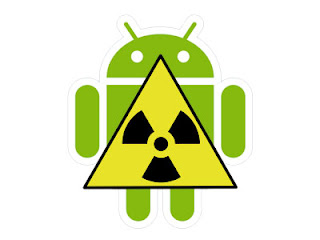I agree with most of the opinions. Gartner makes its money on research, and, as such, is prone to exaggerate some preferred predictions - possibly in the hope that the very act of proffering them will lead to them occurring. Given their influence, it's not unreasonable, but it is a bias. So it's always healthy to view such research through the lens of a few opinions.
I agree with most of Chris Taylor's opinions, with some caveats of my own. It will be fun to review this post in a year's time...
Mobile device diversity & management: I'm with Chris on this. Enablement always trumps caution in technology, for better or worse. Technologists are always more interested in whether they can do something, rather than whether they should, and especially in software (that's why it's 'soft', right?). So ubiquity will work by 2018. The only constraint to it will be vendor lock-ins, not policies or standards.
Mobile apps & applications: I think Javascript is coming to the enterprise, so more enterprise apps will become web-based (or, more specifically, more desktop software companies will be able to build desktop-equivalent apps for browser). However, mobile-native apps will continue in the consumer space because there are a lot of vested skills in iOS and Android out there, and because companies like the vanity of having an app.
Internet of everything: it's seeping out, rather than exploding as many enthusiasts predicted it would. All it needs is one killer app, though, and it could rapidly come into its own. I imagine that app to be something like a cheap, SD card-sized Raspberry Pi, with sensors, micro USB connectivity (2, one for power, one for device(s) and really simplistic, user-friendly dev software.
Mobile device diversity & management: I'm with Chris on this. Enablement always trumps caution in technology, for better or worse. Technologists are always more interested in whether they can do something, rather than whether they should, and especially in software (that's why it's 'soft', right?). So ubiquity will work by 2018. The only constraint to it will be vendor lock-ins, not policies or standards.
Mobile apps & applications: I think Javascript is coming to the enterprise, so more enterprise apps will become web-based (or, more specifically, more desktop software companies will be able to build desktop-equivalent apps for browser). However, mobile-native apps will continue in the consumer space because there are a lot of vested skills in iOS and Android out there, and because companies like the vanity of having an app.
Internet of everything: it's seeping out, rather than exploding as many enthusiasts predicted it would. All it needs is one killer app, though, and it could rapidly come into its own. I imagine that app to be something like a cheap, SD card-sized Raspberry Pi, with sensors, micro USB connectivity (2, one for power, one for device(s) and really simplistic, user-friendly dev software.
Hybrid cloud and IT as service broker: I'm mostly with Chris on this. The issue with cloud is not security (that's a perception to address, though), it is integration. But, living in a developing country, I would not be as dismissive of the connectivity and jurisdictional issues.
Cloud/client architecture: this is just the same as the old client/server arguments. It ebbs and flows in roughly 5-10 year cycles: it's all about the client, then all about the server etc. I see no reason for that to change just because those servers are moving to the cloud.
Era of personal cloud: Agree, but I prefer to see it in more simplistic terms. As Marc Andreesen once wrote (in the WSJ, I think): software is eating the world. As more of our media is encapsulated in software (be it music, documents, patient records, news feeds, address books, hotel bookings etc.) the amorphous, invisible nature of software is taking hold in a very personal way.
Software defined anything: see above. Same thing, just the developer side of it.
Web-scale IT: see above. Same thing, just the enterprise side of it.
Smart machines: bit ambitious of Gartner to make predictions to 2020 (that's a century in IT terms!), but I agree with the gist that there will be some inflection point ahead based on smart machines, when we'll look back on Siri and Google Now as quaint pre-cursors to the main event.
3D printing: not convinced that this is any more than a cottage industry enabler. It's like printing: nearly everyone has a printer in their office and in their home, but we only really use them for office and home stuff. If we want business cards or brochures we still go to the professionals. Same with 3D printing: the key inhibitors will always be cost of materials and mass customisation (why print my own trainers, when Nike can build me a custom pair for $120?). So the main benefit may be contextual: it stimulates the customisation efforts of mass producers.
Chris' own list is good for 2014, I think. That's the near-term direction things are heading.




